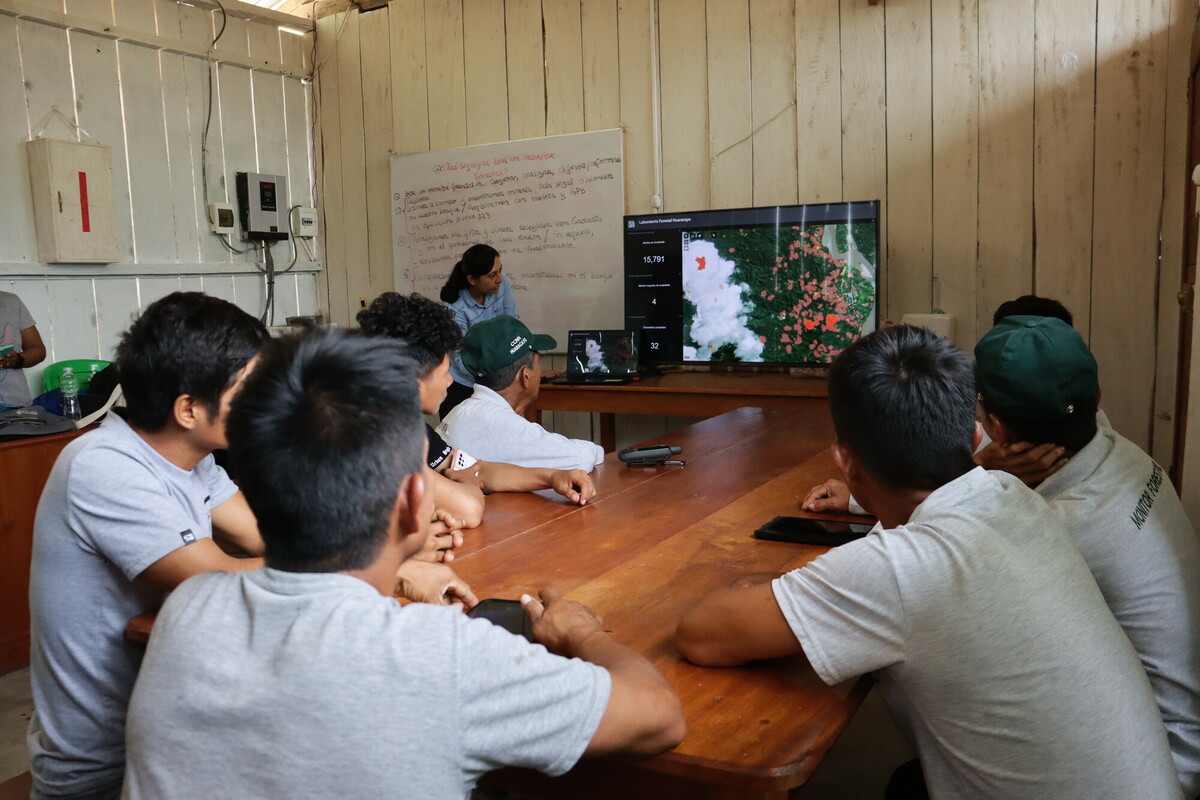
Rainforest Labs: The latest forest protecting technology
As you hike through dense rainforest, the last thing you expect to come across is an Indigenous office filled with the latest technology, laptops and satellite data.
But if you’re based in the Amazon in Peru, and even in extremely remote rainforest in Papua New Guinea, that is now possible. These are high rises of a different kind, wooden huts on stilts to protect from the heavy rains rainforests are known for.
These huts, or offices, are known as Rainforest Labs.
Each Lab is packed full of technology to help identify threats to rainforests. We’re talking satellite imagery, digital devices, as well as wifi and electricity, both rare deep in the heart of the rainforest.
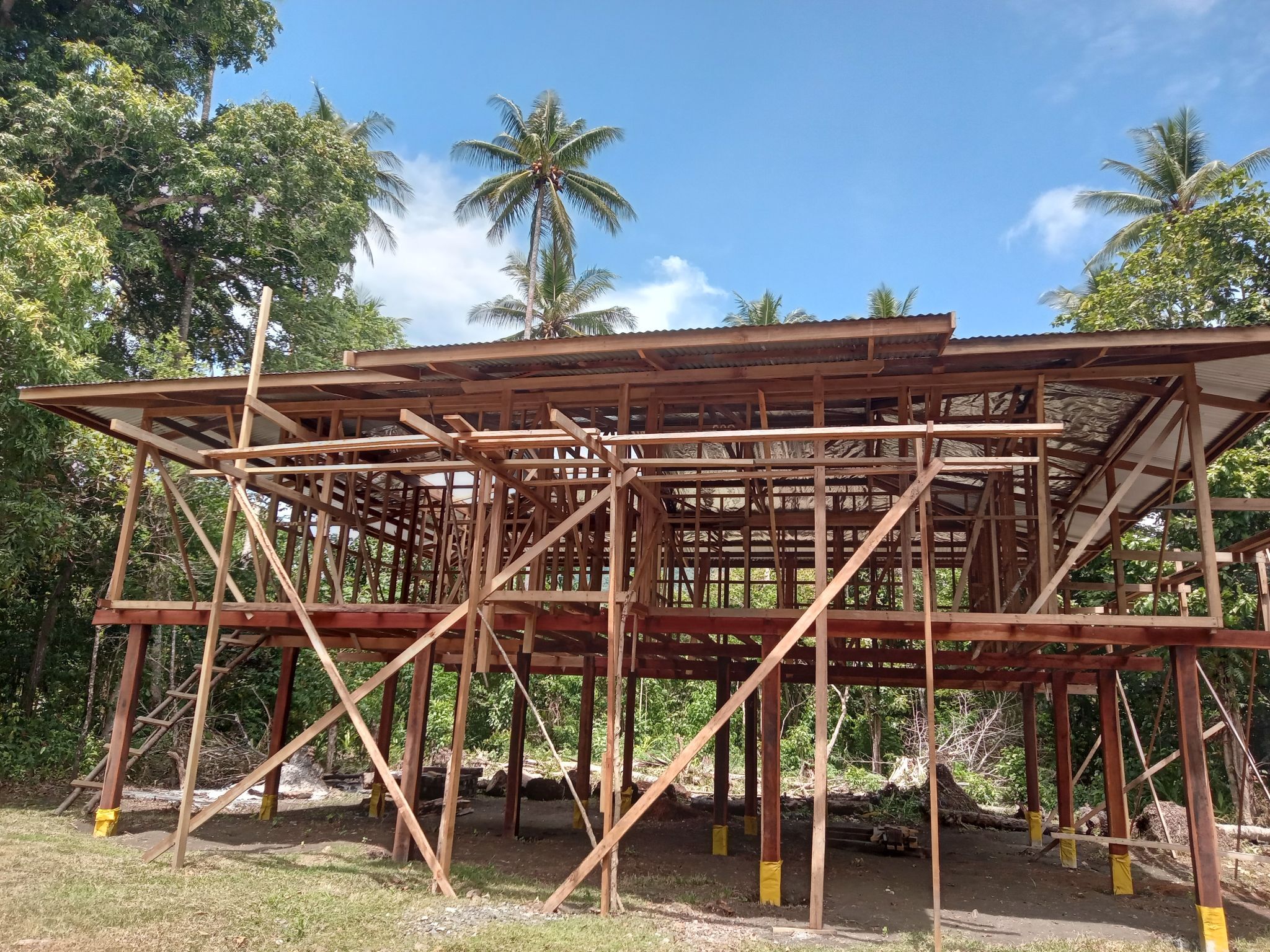

We partner with Indigenous communities to combat deforestation with tech protected in wooden Rainforest Labs, such as this one being built in Wabumari in Papua New Guinea
Tech in these regions doesn’t come easy. Challenges include carrying huge solar panels through dense rainforest. Trying to get batteries used to store the energy to communities by motorbike despite being hindered by over 8 inches of thick mud. Or, having to go by sea to transfer equipment to communities on the east coast of Papua New Guinea.
These are just a few examples of some of the challenges our teams have come up against. But the challenges are worth it.
Every Rainforest Lab is run by a team of Forest Monitors from nearby villages, such as Orrego, a member of Peru’s Awajún community who now works as a forest monitor with Cool Earth. “The rainforest provides us with everything, that’s why we want to care for it. We need to ensure that no one takes that away from us” he says.
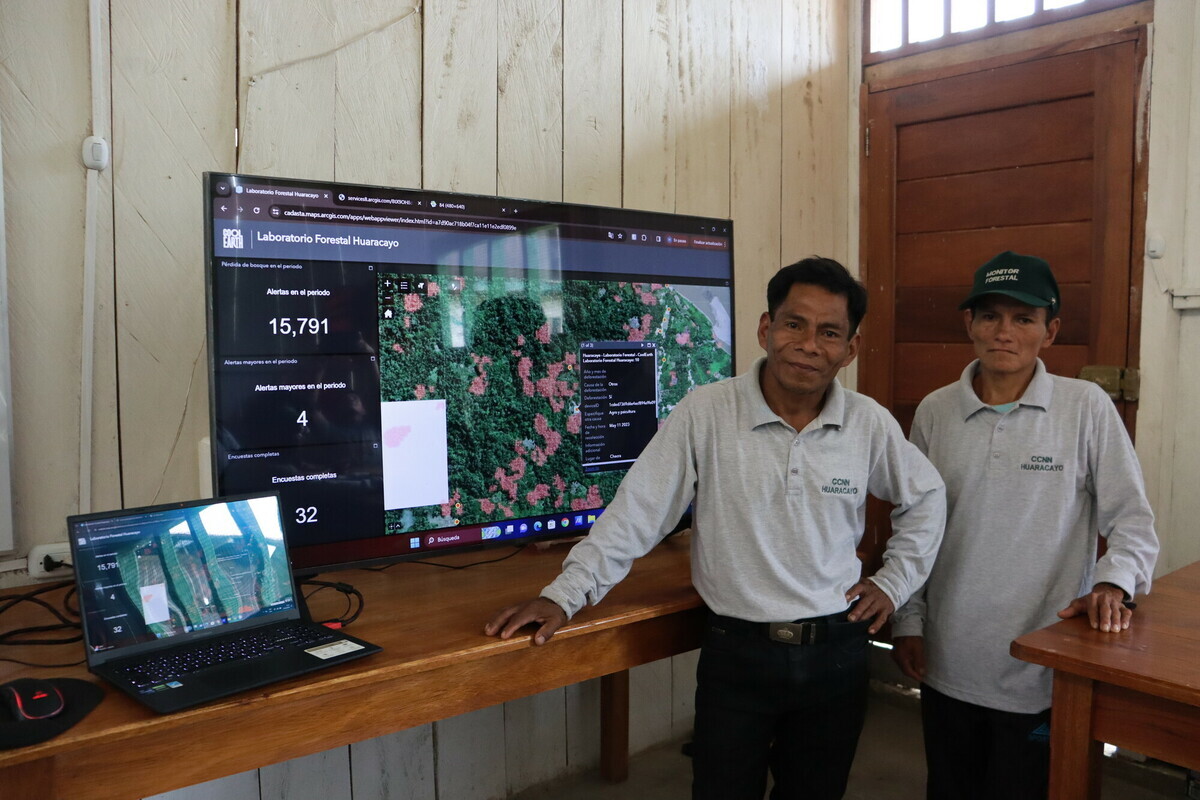

Forest Monitors Abelardo and Ubaldo, who hail from Indigenous communities in Peru, pose at the Rainforest Lab in Huaracayo
It turns out that each of these small but mighty Rainforest Labs is a vital tool in the fight against climate change but also helps address the inequalities faced by Indigenous peoples.
Matt Proctor, Forest Impact Lead at climate charity Cool Earth explains, “Technology is quickly becoming central to Indigenous people’s ways of life, and most importantly in their fight to maintain their territories, and rightly so.”
“It’s strange to think that you and I have better access to data on their territories than they do, despite the fact that they live there. Quickly Google wildfires in The Amazon and you’ll find out that 29,000 fires were reported in August and that is an 83% increase on last year. You can even see exactly where they are happening. Yet, whilst Indigenous peoples are often the first to find the wildfire, they are often the last to know about its full extent and where it may spread to, due to Government or agency delays in getting information to such remote regions.”
“Filling this gap in the chain of information with our Rainforest Labs and other tech arms rainforest communities with the news, data and support they need to keep their rainforest intact.”
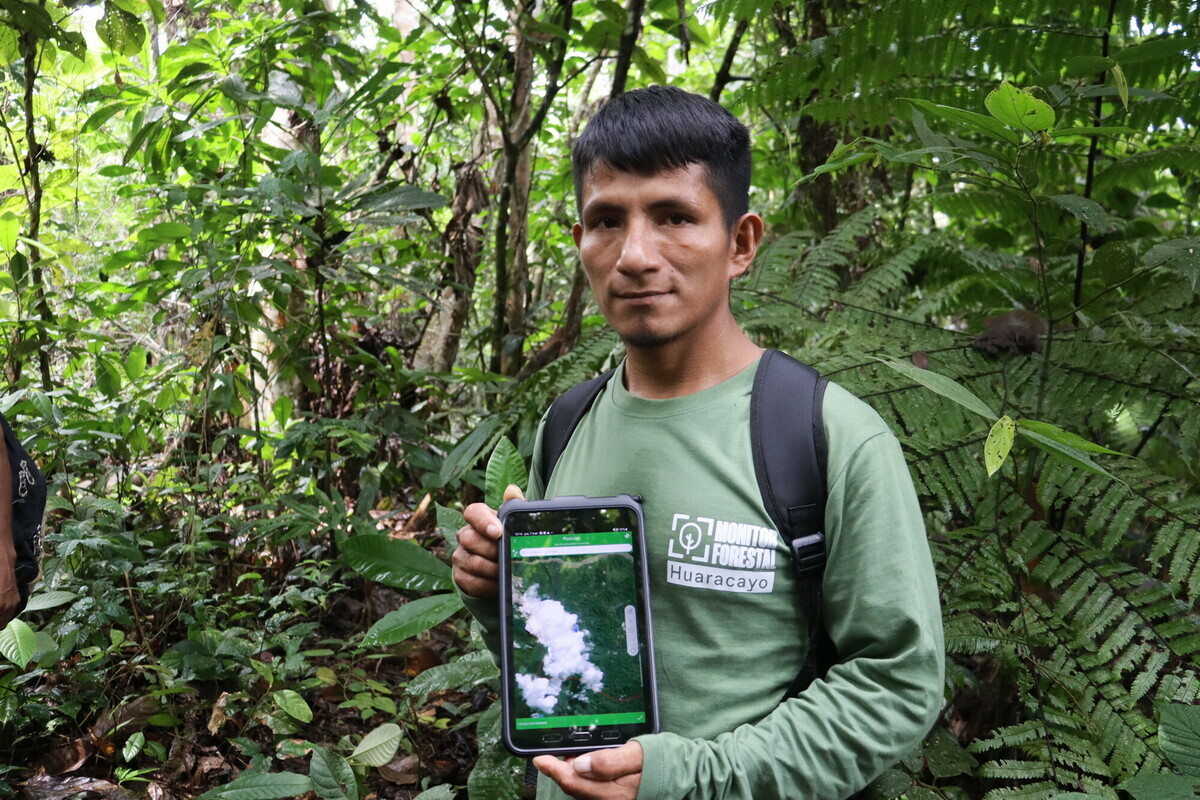

Ronaldiño, working with Forest Monitors in the Awajún community of Huaracayo, displays a tablet being used to take photos and register key information in the fight against deforestation
With over 100 forest loss alerts in the communities in Peru already, Rainforest Labs are vital. In fact, early September they were used in the Asháninka region of Peru to raise the alarm with nearby communities that a fire was in the region and action to prevent it spreading was needed quickly. But Rainforest Labs are not the only tech used to help tackle threats in these remote areas.
In the Asháninka region of Peru Cool Earth works with Indigenous partners CARE (Central Asháninka del Río Ene) on a project known as Paamari – also the word for fire in Asháninka. As part of this project CARE has developed a monitoring centre to share real-time alerts about the probability of a fire starting in their territory. Members of the community have also been taught how to use drones and GPS to track fires more accurately so action can be taken quickly.
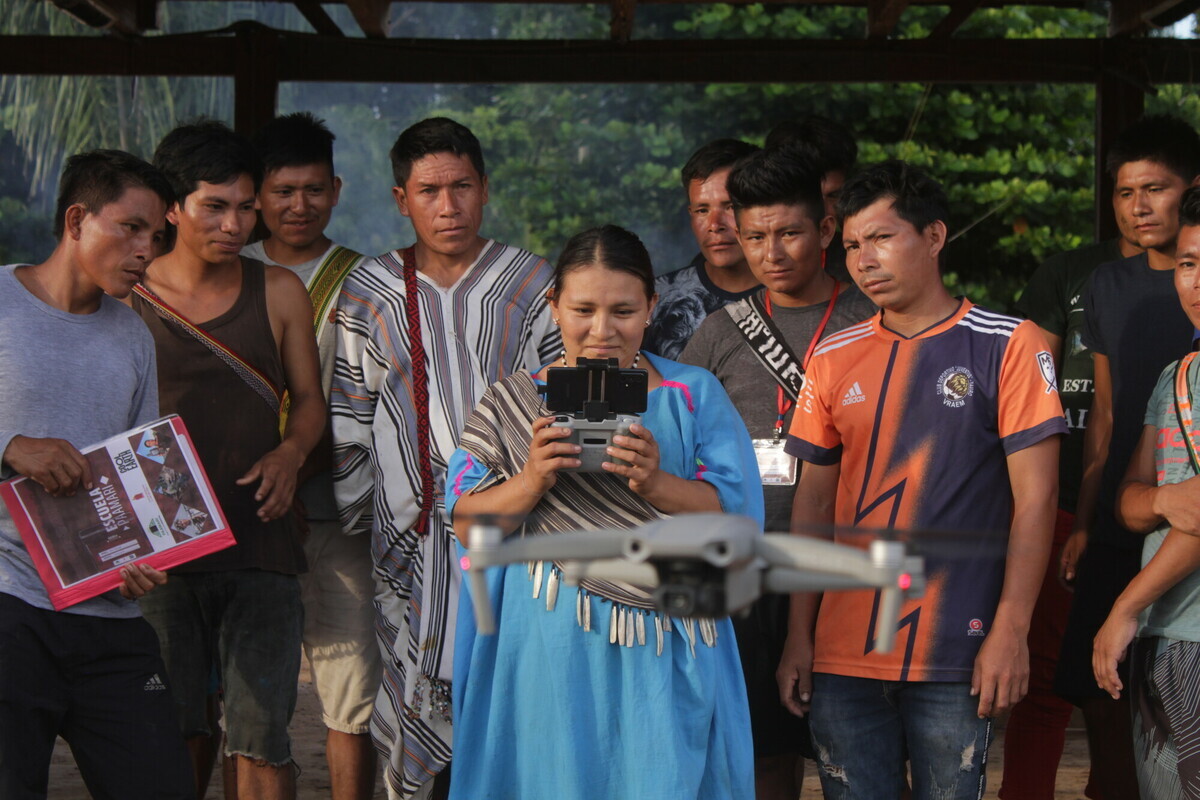

Members of Indigenous communities in Peru use drones to monitor and fight fires threatening the rainforest
And in Parijaro, one of the remotest communities Cool Earth works with, high in the Ene Valley mountains and accessed only by one small, often inaccessible mud road, access to wifi has saved lives.
Here climate change has brought cooler weather than people are used to, and with that comes illnesses. Now the leader of the community has access to Whatsapp and is able to call for help when community members are critically ill. It means they can by-pass the two day journey on foot and boat to get to the nearest hospital by calling in motorbikes, or if critical, to be transferred by helicopter.
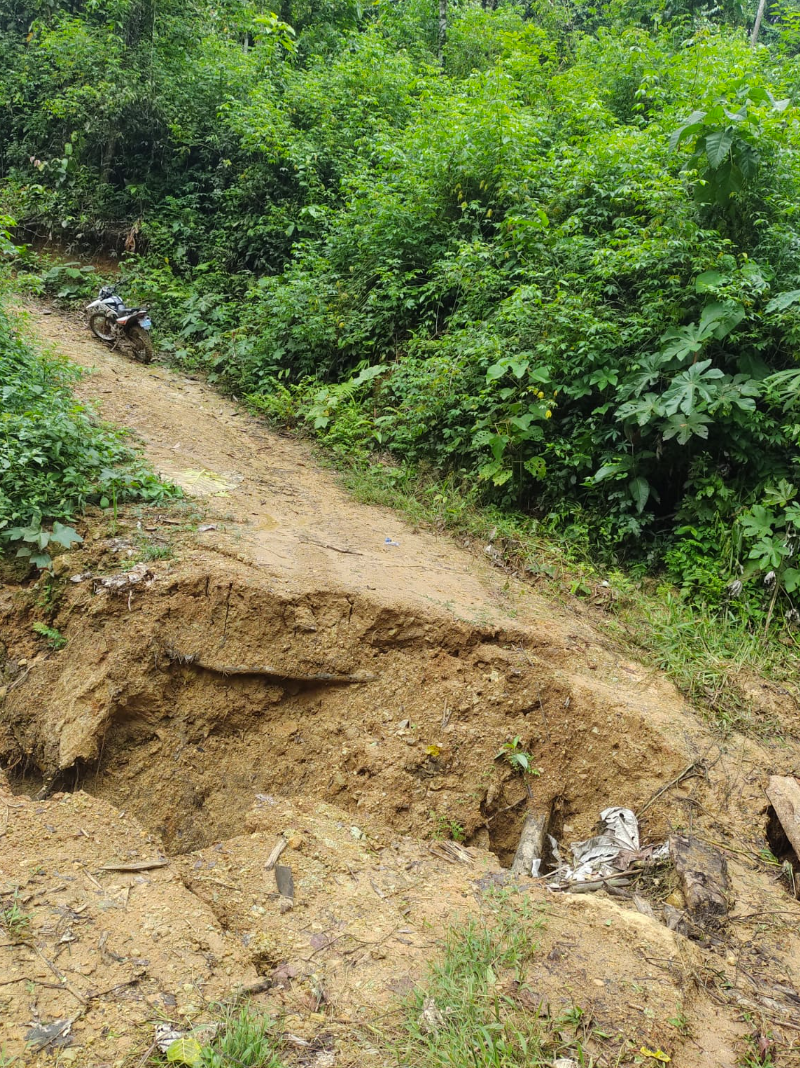

Parijaro, a remote Indigenous community in the Peruvian mountains, can only be reached by this often-inaccessible road, pictured after heavy rains; new tech and training mean that a community leader can now utilize WhatsApp to call for help in cases of emergency sickness, enabling access to medical care by motorbike or even helicopter, rather than an arduous two-day journey
Whilst getting tech into the rainforest is full of challenges, for the fight against climate change, it is vital. Less deforestation (up to 82% less in Cool Earth’s partnerships than in areas outside of them), more resilient and empowered rainforest communities, combined means there is hope in the fight against the climate crisis.
